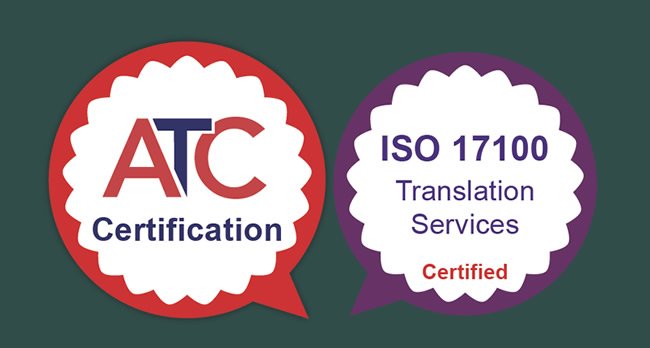Managing Arabic Website Translation Projects
Targeting Arabic speakers will provide you with a great opportunity to grow your client base and increase your business. Although there are more than 420 million people in the world who speak Arabic, the companies that have translated their content from English to Arabic are only about 5% of the websites on the internet today.
Not translating content into Arabic could result in many missed opportunities. Mobile phone usage and gaming are on the rise among Arab consumers. By targeting this audience through the translation of your website into Arabic, you can open new markets and increase your revenue.
How the Translation of Your Website Can Advance Sales
English speakers represent 25% of the total internet users, so by simple calculation, 75% would prefer to surf the internet in their native language. Here you can envision the return on investment by translating your site into Arabic, as it will achieve access to 182 million users in the Arab world.
Selecting the Right Language Partner
Now that you have decided to translate your site into Arabic, the next step is working with a knowledgeable localization company that understands the process and all the nuances of website translation.
Here are some points to consider before you start translating:
- Define your target region(s) and audience. Since there are different Arabic dialects and cultures in each country, you want to be sure your translation is targeted to the correct demographic.
- Is the layout of your web pages suitable for the target language?
- Is any of the content on your website language-dependent?
- Make sure that your CMS will support Arabic.
- Decide what content should be translated.
- Decide if you will need SEO work on your content
When you have this defined, you can begin planning with your translation provider, who should be well-versed in website localization and will guide you through the process.
- Discuss with your language provider the project workflow.
a. How should you supply content?
b. Can they work with your CMS?
c. What are the options to import translations back into CMS?
d. How will online QA of the imported translations be performed? - Supply web content files to your translation provider according to your discussions in item 1. They will review the files and confirm that there are no technical issues and that the files will be able to revert to the native file format.
- Your provider should review your English website content and make sure it’s appropriate for the Arab culture and provide recommendations for modifications if needed.
- Your translation provider may suggest a quick, small pilot run to make sure that all will go smoothly once the translations are delivered. This will help avoid any surprises and if there are issues, allows you time to resolve them without negatively impacting your launch.
- Ask for a detailed delivery schedule so you are clear on the steps that your language provider will follow and now what tasks you may need to perform.
- Translation workflows often include a client translation review phase which allows your Arabic resources to review the translations and provide feedback on the terminology used within your organization. Make sure that your reviewers will be able to check and provide feedback to your language provider on time to avoid any delays. Your translation provider should discuss with you how the review process will work and how the content will be supplied for review.
- Confirm the review phase if this will happen on the translation files and will it be reverted to the translation provider to globally change through the files.
- Before publishing your website, an online quality audit (QA) should be performed on the staging server. Your translation provider can complete this task and provide any feedback. There are several ways online QA can be completed and your provider should discuss this with you at project start.
Quality
Translation quality and accuracy are extremely important to your success in the new market, that’s why you need to make sure that your translation provider is following the right approach.
GPI, an ISO certified (ISO 17100:2015) company, follows a specific process designed to provide the best in quality translation services. To provide the perfect translation quality we:
- Automated review through different CAT tools (Trados QA tool, Xbench) which captures: Tag mismatch, Numeric mismatch, Double blank, repeated words, missed translation and, CamelCase Mismatch also the Typos and Key Term Mismatch.
- Translation, editing, and proofreading by separate linguists to ensure the translation is complete and error-free, and that the style and tone of voice of the content reads as if was originally written in the target language versus translated.
If your translation provider is not discussing the review and approval process with you, you should ask questions and make sure they will meet your needs.
Conclusion
• Managing Arabic website translation is more than just converting one language to another. A change in semantics or a slight cultural difference can cause significant damage to your brand in that region. Therefore, it is crucial to thoroughly qualify your translation provider; you need to make sure that you are getting the best translations from an expert in this field.
• GPI is a team of language, technology, project management, and business professionals with over 20 years of extensive experience in translation services. We work closely with our clients to understand their needs and develop a plan to meet their translation goals. We advise our clients who are planning to enter the Arab marketplace to discuss their goals and language needs in advance. We want to be sure you understand the steps of the website translation lifecycle, what adjustments may need to be made to your website structure to support Arabic, and if any adjustments need to be made to the source content to adapt it to the target market.
This information is invaluable when developing your Arabic marketing campaign. The adage, “you only get one chance to make a first impression” cannot be stressed enough when entering the global market.
• Let the above-mentioned points guide you in the selection process of a translation partner. Proper planning and an experienced language services provider at the onset are key to a successful launch in the Arab market.
References:
The Effect of Back Translation on Students’ Translation Achievement
Steps to Website Translation Success GuideBook
Website Localization and Translation


